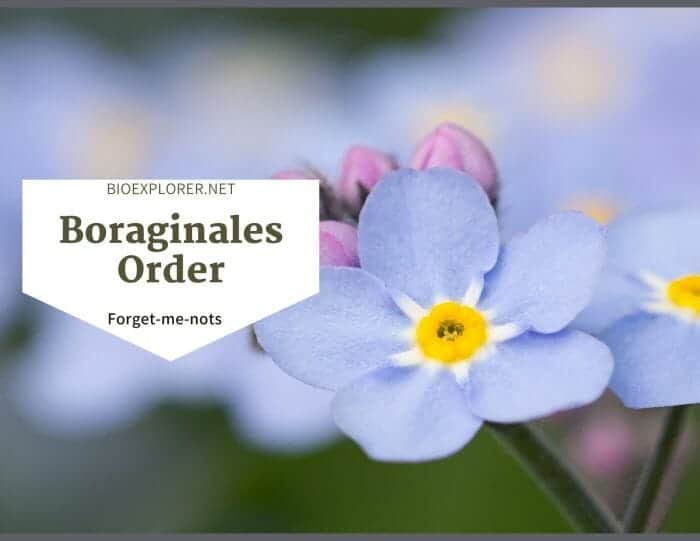
Boraginales is an order of flowering plants consisting of herbs, shrubs, or trees worldwide. Members of the Boraginales have simple and spiral leaves, usually monochasial of scorpioid cymes inflorescence, 5 sepals and 5 petals, and a profoundly 4-lobed ovary because of the false septa. The forget-me-nots, comfrey, and borage are ornamental plants under Boraginales.
Table of Contents
Order Boraginales is placed under the asterid clade. The APG IV system of classification in 2016 places only 1 family, Boraginaceae, under the Boraginales. However, recent studies consider the order as having 11 families[2].
Boraginales Distribution
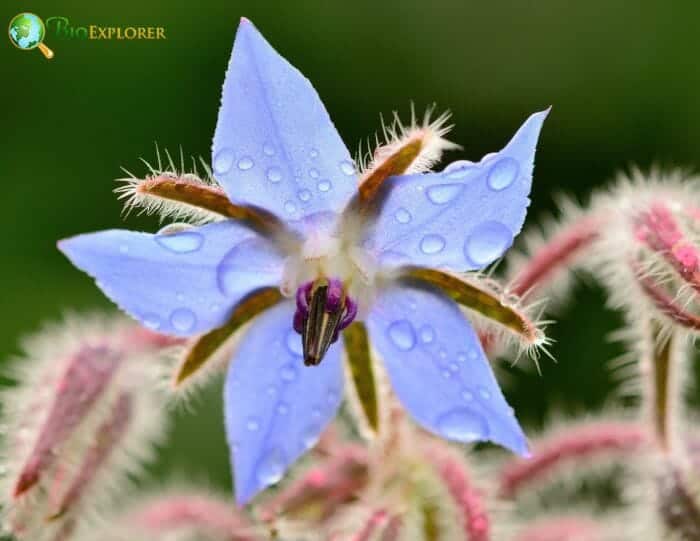
The species of the Boraginales order are worldwide in distribution. Boraginaceae (120 genera and 2000 species)[3] are found in temperate and tropical regions. However, there is an intense concentration of species in the Mediterranean region.
![]()
Boraginales Characteristics
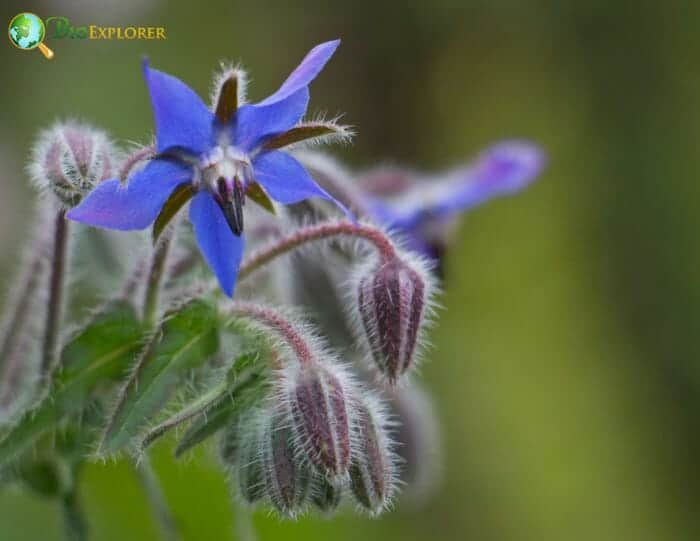
- Plant type: Plants of Boraginales are primarily annual or perennial herbs. Rarely, the members are shrubs or trees. Often the members of Boraginales have hirsute or hispid vestiture.
- Stem: The stems of the plants are herbaceous or woody in arboreal forms. They can be erect, aerial, solid, cylindrical, branched, or hispid. Sometimes the stems are rhizomatousWhat is rhizomatous?Bearing rhizomes. Rhizome is an underground stem, with nodes and short to elongate internodes..
- Leaves: The leaves of the species are minute to medium-sized. These leaves are simple, alternate, opposite, petiolate, and exstipulateWhat is exstipulate?Without stipules; Stipule is a small structure of appendage found at the base of some leaf petioles.. The lamina margins are primarily entire. The leaves are usually converged with hairs.
- Flowers and inflorescences: The flowers are bisexual and actinomorphicWhat is actinomorphic?A characteristic of the flower exhibiting radial symmetry such as starfish or Daisy flower; capable of being bisected into identical halves along more than one axis, forming mirror images. Opposite is Zygomorphic.. The inflorescence is solitary or in cymes (usually scorpioid); terminal, axillary, or leaf-opposed. The flowers are usually coiled at first.
- Sepals and petals: The sepals are commonly 5. In some species, the calyxWhat is calyx?A collective term for all the sepals of a flower; the lowermost whorl of floral orgrans (Plural form is calyces). lobes are 4-8. These lobes are usually hairy, imbricateWhat is imbricate?overlap or cause to overlap; in botany terms, scales, sepals, or plates having adjacent edges overlapping; with margins of structures overlapping like shingles on a roof. or valvateWhat is valvate?Sepals having adjacent edges abutting rather than overlapping; opening by valves; edges of structures coming together so that the margins touch but won't overlap., and persistent. The petals are also usually 5; imbricate or valvate.
- Stamens and carpels: The stamens of the flowers are also typically 5. In Cordia, it is 4-8. These stamens are whorled, alternipetalous, and unseriate. There are 2 carpels in the gynoecium.
- Ovary and fruit: The ovary is superior. The ovary becomes tetralocular because of the false septa that divide the carpel. The fruit of the species is a drupe, a schizocarp comprising nutlets.
- Seeds: There are 1-4 seeds in the fruit. The seeds are endospermic or non-endospermic (mostly).
![]()
Boraginales Flowers and Reproduction
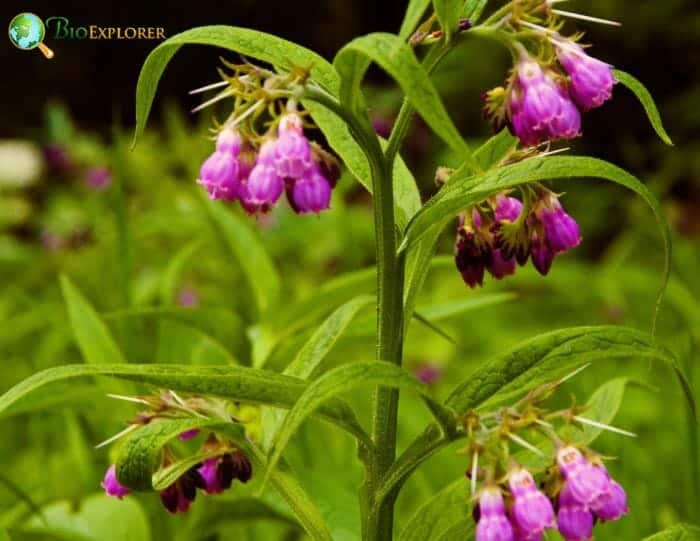
Boraginaceae flowers are actinomorphic, pentamerousWhat is pentamerous?Having parts in fives or multiples of five., and hypogynous. These flowers are sessile or pedicellateWhat is pedicellate?Borne on a pedicel; a flower characterized by having a stalk is also known as pedunculate or pedicellate; opposite is sessile (i.e., no stalk);, bracteateWhat is bracteate?Possessing or bearing bracts. or ebracteate, and bracteolate. The inflorescence is a terminal or axillary cyme or solitary axillary flower.
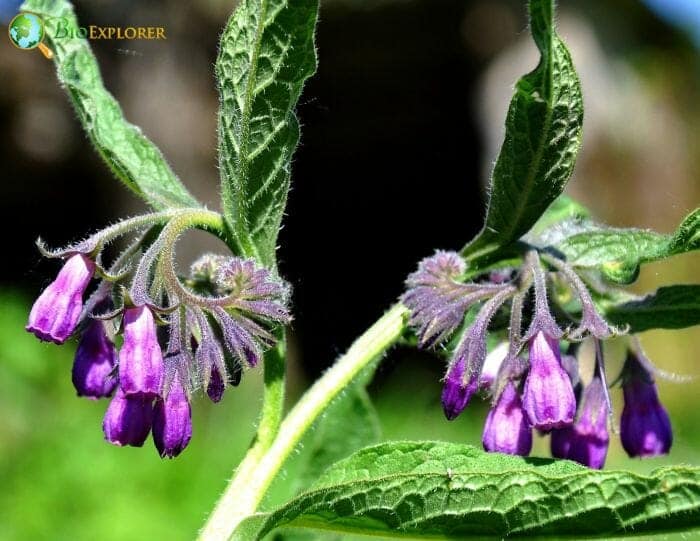
The flowers are coiled at first and uncoil as they open. The biseriate and dichlamydeousWhat is dichlamydeous?Having a perianth composed of a distinct calyx and corolla. perianth consist of 5 sepals in the calyx and 5 petals in the corolla. The calyx lobes are valvate and are often covered with trichomes. The white, yellow, pink or blue corollaWhat is corolla?A collective term referring to the petals of a flower. lobes are rotate, salverform, campanulate, or infundibular. These petals are imbricate or valvate. The flowers of the Boraginaceae are usually bisexual, and the pollination is entomophilousWhat is entomophilous?Pollination by insects. Contrast anemophilous (wind-pollination). via the Hymenoptera.
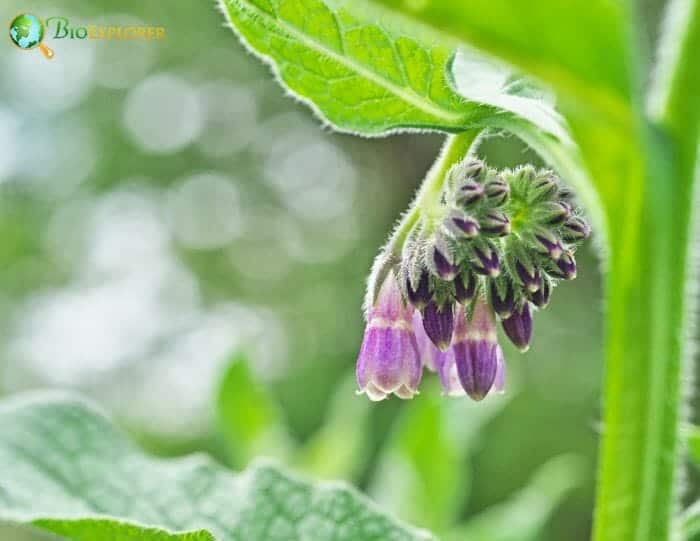
The Forget-Me-Not flowers[4] (Myosotis sylvatica) are tiny (about half an inch in diameter) with 5 white, yellow, pink, or blue petals. A single flower is found on the central stem. Additional blooms are found in the branching stems. The Myosotis scorpiodes have flowers in clusters. The flowers bent and curled like the scorpion’s tail.
These two species look similar but differ slightly in bloom time and growing conditions. The flower of field forget-me-not (Myosotis arvensis) is mostly pollinated by the Hymenopterans and small flies. However, the species can also undergo self-pollination.
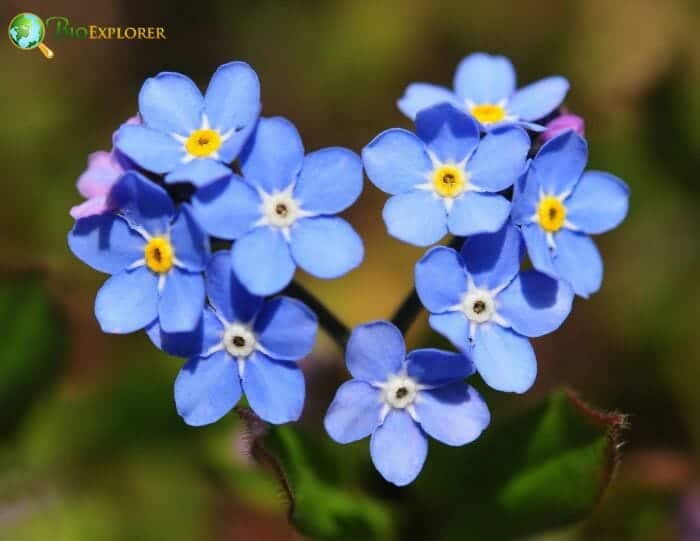
The starlike borage flowers (Borago officinalis) are complete and perfect. Each plant can produce a huge floral display. These flowers are in scorpioid cymes. There are 5 petals in the corolla; narrow and triangular-pointed. Often, the flowers are blue. Other varieties are pink or white. Species undergo geitonogamy.
Borage flowers are red in their early development and become blue when they age. The change in the color of the flower is associated with its pollination strategy.[5] Pollinators of the borage are insects, particularly bees. The reward is nectar.
![]()
Boraginales Example Species
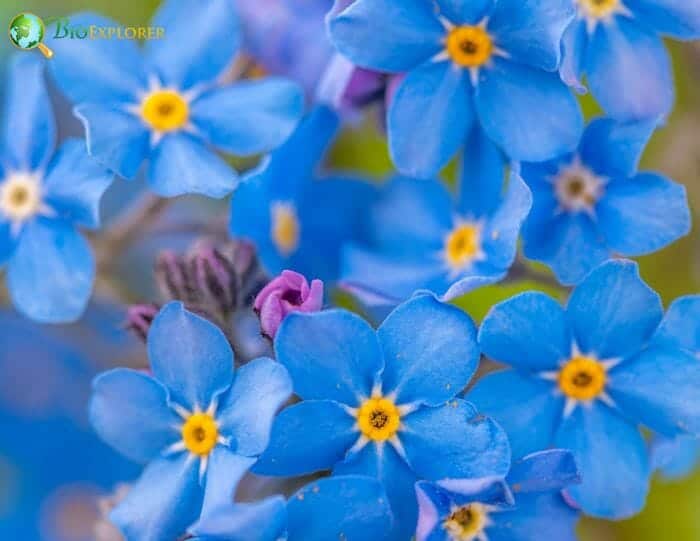
The plants of Boraginales are of limited economic importance. Most of the species are cultivated as ornamental. Others are used as herbs or sources of dyes. The following are the example species of the order Boraginales.
- Alkanet – The root of the Alkanet produces dye used by the Mediterranean region. The root of the plant is used in traditional medicine. The leaves of the A. tinctoria are effective against multi-drug resistant (MDR) bacteria.
- Borage[6] – The flowers and leaves of borage are edible. Its stem (once dried) can be used to flavor beverages. The seeds of the plant produce the borage seed oil. The oil, flowers, and leaves of the borage plant have many uses in traditional medicine.
- Comfrey[7] – All parts of this plant are poisonous. Comfrey has many medicinal uses. Its attractive foliage and flower also make it an ornamental plant.
- Field forget-me-not – The species is introduced to North America as an ornamental plant. The field forget-me-not produces essential oils with anti-inflammatory, antifungal, and antibacterial properties.
- Scarlet Cordia – The Scarlet Cordia is used in landscaping parks and gardens. Its leaves have antibacterial solid potential and are used in traditional medicine[8]. The fruit is edible and also has medicinal uses. Its flowers and bark are also of medicinal value. The timber of the plant is used for carpentry and construction.
- Evergreen bugloss/Green Alkanet – The flowers of the species are edible. Often, the flower is used as a fruit drink and salad ornament. Also, the green Alkanet is used as an ornamental plant.
- Heliotrope[9] – The Heliotrope is an ornamental plant in temperate and tropical gardens. The flowers of the plant are sources of oil for perfumery. In addition, the whole plant is used in traditional medicine.
- Chinese forget-me-not – The species is an ornamental plant. It is also used in traditional Chinese medicine.
- Oyster plant – The leaves of the oyster plant are edible (raw or cooked) and taste like an oyster. The flowers are also edible. Further, the species can also be used as a garden plant.
- Lungwort – The lungwort is an ornamental plant with medicinal uses. It has been used to treat several lung ailments.
![]()










